Beatmatching
Pont-Aven (FR) - Winner

© Guillaume Mithieux
TEAM DATA
Associates: Victoire Coizy (FR) – architect, urban planner, Léa Mellet (FR) – urban planner, Chloé Monchalin (FR) – architect, William Roth (FR) – landscape architect
Contributor: Juliette Gonnin (FR) – architect
75020 Paris, France
chloe.monchalin@hotmail.fr
See the complete listing of portraits here
See the site here
TEAM PORTRAIT
VIDEO (by the team)
INTERVIEW
Click on the images to enlarge
1. How did you form the team for the competition?
We constituted our team at the beginning of 2021 with the desire to work together outside of our usual professional or academic contexts. It seemed obvious to us, in order to meet the demands of the Europan 16 competition, to form a multidisciplinary team around common values. We had already had the opportunity to work together in the past, within offices and international exchanges. After a few years of practice in the fields of architecture, urbanism and landscape as employees, we wanted to confront our visions and develop a project with more freedom, outside a predefined framework. The bonds of friendship and trust that unite us have been essential to develop a response that corresponds to us all.
2. How do you define the main issue of your project, and how did you answer on this session main topic, Living cities?
We became aware that time, rhythms and cycles are important parameters when thinking about urban planning. Time is short : climate change requires us to change how we conceive cities, how we live in them, how we reduce the pace. From the first visit, one can tell that human rhythms and natural cycles are interconnected. Pont-Aven shines by its location rooted at the bottom of the Aven’s ria,where fresh river water meets Atlantic ocean water. Up to the town center, the bay is subject to variations of the tides. The river becomes the theatre of fauna migrations depending on the season. It is therefore influenced by the sun’s course, oscillation of luminosity and colours, and vegetation cycles from spring to winter. The site is located at the town entrance in an area that is still rural and close to the coast on either side of the departmental road. By its location, la Belle Angele is a witness to human mobility,daily commuting patterns and seasonal ebb and flow of tourists activities. Finally, La Belle Angèle is part of a long history, both artistic and working class to which are added traces of alternative and ephemeral occupations. We therefore wished to anchor our response in this consideration on human rhythms, natural cycles and their synchronization, based on the temporal or material resources collected on the site and its large territory.
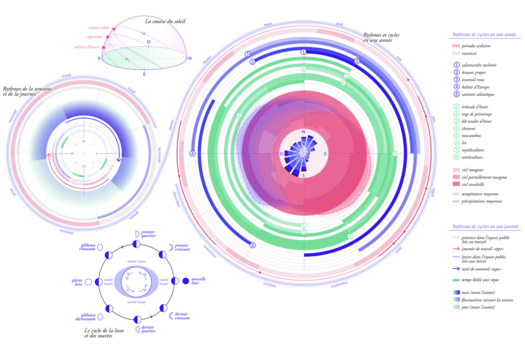
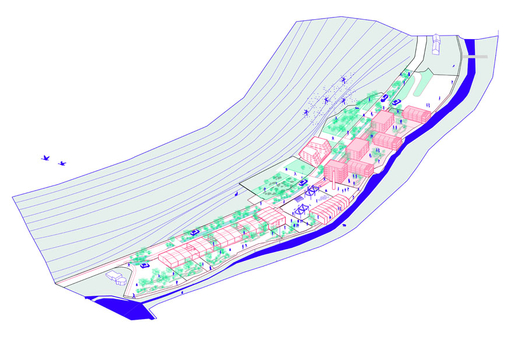
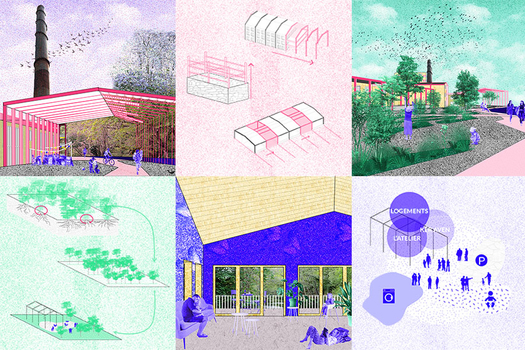
In order not to deliver spaces that are unsuitable in a few years’ time, we are trying to break away from the before-and-after model by adopting new production processes: no longer rigid, hasty and linear, but progressive, inclusive and continuous, leaving room for the unexpected, testing and surprise. First of all, it means accepting time of the fallow period: allowing certain halls to be opened up and reinvested while others are dismantled, making interstices of the space available for activities (we invite the living, not only to invest the abandoned spaces, but to colonize the artificial spaces: we break the tarmac to recompose living environments thanks to the old materials of the site, we create complete cycles of vegetation development, decomposition, and re-conquest of the fauna and micro-fauna). It also means thinking the development of the urban project as a tremendous opportunity for evolution in time and space, using resources of the site to write its future history: the tree nursery where the trees to be planted on site will grow will become a park, facing the housing. The construction systems integrate the reuse of materials on site and, coupled with the spatial organization, allow for the programming of about a hundred dwellings today, with the possibility of densifying tomorrow to accommodate new residents. Integrating the mutations of a more collective living, the decompartmentalization of activities and the needs of adaptability, the housing programs include a set of services and shared places where lifestyles are synchronized and enriched: laundromats, micro-nurseries, teleworking or play spaces, garages and shared workshops. The project also responds to the temporalities linked to the seasons, to the times of mutation and construction for an inventive programming of the spaces-time which invites to the cohabitation of the uses and activities: interweaving of seasonal housing, land reserves with living spaces, and places of production from the resources of the aven's territory.
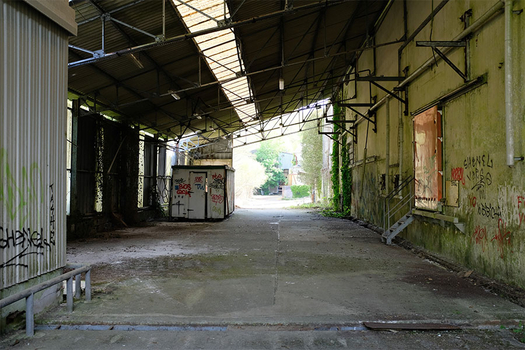
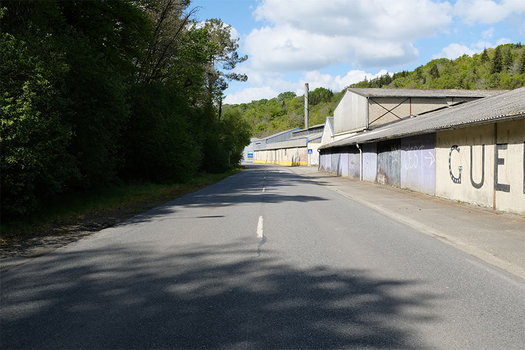
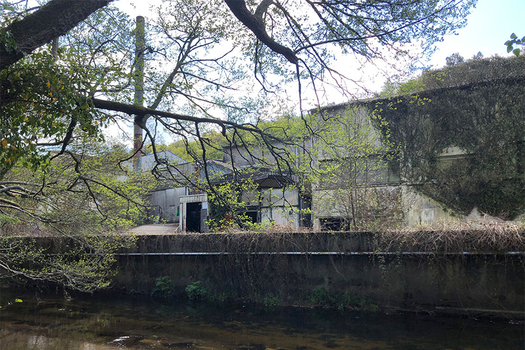
During the course of our respective professional experiences, we have been able to touch on the issues of living cities, human rhythms and natural cycles. However, we had never had the opportunity to think about them in depth, through the prism of our personal visions and especially within the same project. The Europan competition was an opportunity to conduct more in-depth research and to intertwine these questions for the benefit of the development of our proposal. We have nourished our theoretical positioning with research initiated by the 6th cycle of the Revue Sur Mesure entitled "Battre aux rythmes de la ville", as well as the writings of geographers or interventions carried out for the exhibition "La beauté d'une ville" at the Pavillon de l'Arsenal, Paris, in 2021. Our vision of public space and landscape proposed to the Pontavénistes has also been forged through manifesto projects and theories developed by Gilles Clément on the "tiers-paysage". The approaches of the office Construire and in particular of Sophie Ricard (architectural permanence), or of the Atelier LUMA in Arles on the revalorization of natural materials in the construction of the city of tomorrow have also guided our reflection on the architectural and programmatic scale for the Belle Angèle site.
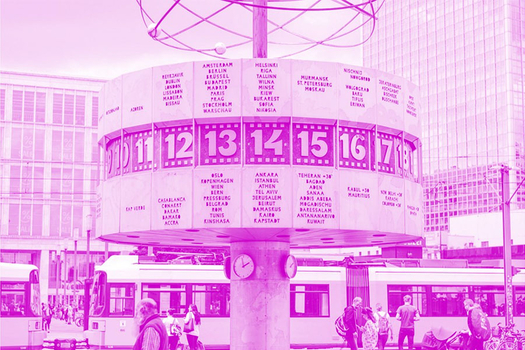
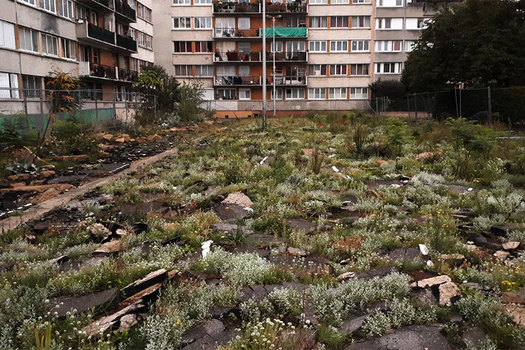
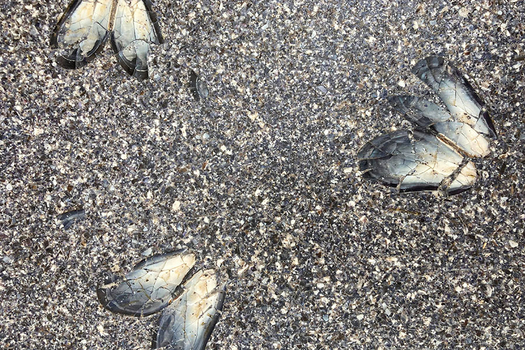
Our project proposes to compose with the Pontavénistes a "workshop-district" which takes advantage of its situation at the entrance of the city to test and adopt a temporality and a more organic urban space based on the decompartmentalization, the mutualization, the modularity and the reversibility of the places and the uses. Then, if it works, to spread them over the territory of Aven. We proposed a first gathering of the resources, temporal or material, which the territory has, associated with an adapted and located toolbox. From there, we chose to illustrate one possibility, among others, of development of the site in space and in time. Inspired by the new project processes, we proposed, for example, to keep one of the halls to act as a project house and to host the architect-urban planners' offices from the feasibility study "in acts" to the construction site, as well as the times of co-construction between inhabitants. Other methods and other tools are still to be invented, observed and developed. Just as the interstices of space are reappropriated for the benefit of activities of collective interest, the interstices of time allow us to invent the economic and legal alternatives that will ensure the operationality of the project. For us, the essential thing is not to impose a locked programming, a strict division or a precise phasing: we wished to sketch out tracks, to awaken curiosities, and to give the desire, to collectively "remix" the Belle Angèle.
6. Is it the first time you have been awarded a prize at Europan? How could this help you in your professional career?
It is a first for us to participate in the Europan competition, to be awarded is a nice surprise. We hope that this project and this award will allow us to bring new dynamics in our careers, whether within the agencies where we are employed today or during independent work. It is also a great opportunity for us to highlight the issues of ecology and inclusion that are particularly important to us in the city planning of tomorrow. By having mobilized all of our skills and stimulated our creativity, this work considerably enriches our professional practice of urban planning and public space. Starting this reflection on human rhythms and natural cycles in urban and architectural design reinforces our practice of the territory, in the consideration of all its actors and its transformations at all scales of time and space. The prospective reflection that will follow, and the exchanges to come with the other actors of this research (meeting with the selected teams, the juries, the committee of experts, the communities...) also promise to be rich in learnings.
TEAM IDENTITY
Office: -
Function: architecture, urban planning, landscaper
Average age of the associates: 27 years old
Is your team multidisciplinary? If yes, what are the disciplines and why did you include them to your project?
All four of us come from different backgrounds and are driven by the same curiosity, which stems from our professional practices where we work alongside other disciplines that enrich our daily work. It is because we know that the limitation by discipline does not allow us to explore everything that constitutes the territory that we support our work with a plurality of views and cross many skills to formulate rich, more complete projects.
● Urban sociology and geography: We have attached great importance to visiting the territory to immerse oneself in it and have a sensitive approach to the place. Being observant without forcing ourselves to imagine a future allowed us to better feel the richness of the site. After visiting the site and talking to some of the inhabitants about the needs and possible functioning of the city, our first instinct was to look at the socio-demographic data. They allowed us to have a broad vision of the territory and its issues, a social vision and not only a spatial one.
● Architecture, landscape and public space: We wanted to respond to programmatic needs by imagining a project including temporary occupations at different spatial and temporal scales. The urban situation and the architectural design of the housing, facilities and public spaces are defined by a programming of space-time. In order to aim for the most inclusive entrance to the city, we have taken care to programme our site so that activities can coexist, uses can be shared and the public space can be made accessible to all. We have drawn on the field of temporary architecture and developed tools for phasing the occupation of the site, approaches that will eventually allow us to respond to future adaptations in the best possible way. Still in this same approach, it was essential to adapt the construction methods to the time of the project and to think of the construction in terms of enhancing resources.
● Ecology, the living: The work on ecosystems in the development of urban project is as important for programmatic issues as for fauna and flora. We wanted to recompose the space by synchronising lifestyles of all living beings, by offering them suitable environments. We also wanted to deal with the connections with the many already mature and growing natural spaces on the site. We also wanted to avoid making sudden and instantaneous changes. To do this, it is necessary to take into account all the functions of the environments, from the subsoil to the sky, in order to treat all the connections, both vertical and horizontal.
Has your team, together or separately, already conceived or implemented some projects and/or won any competition? if yes, which ones?
Together, no, we have not, to date, conceived nor realized a complete project. However, we have already had the opportunity to work together during our university studies or on common projects within the same landscape and urban planning office. Our team is developing together or separately a wide range of professional skills, from responding to calls for tender or competitions (a particularly formative exercise for approaching a subject and a site, identifying the main issues, sketching out project intentions and presenting them in a synthetic manner, both in writing and graphically), to preliminary and operational studies, on various subjects and scales, such as urban projects, public spaces and housing.
Does your team share a common workplace? if yes, give us a short description:
No, the team does not have a working space at this time. During the competition, we were careful to co-design our project "on a daily basis" by developing an adapted thinking process made possible by our geographical proximity, in the 20th district of Paris. We worked as a team, both in the form of collective and regular work sessions as well as in the form of more punctual "intensive" workshops, generally in our respective apartments.








